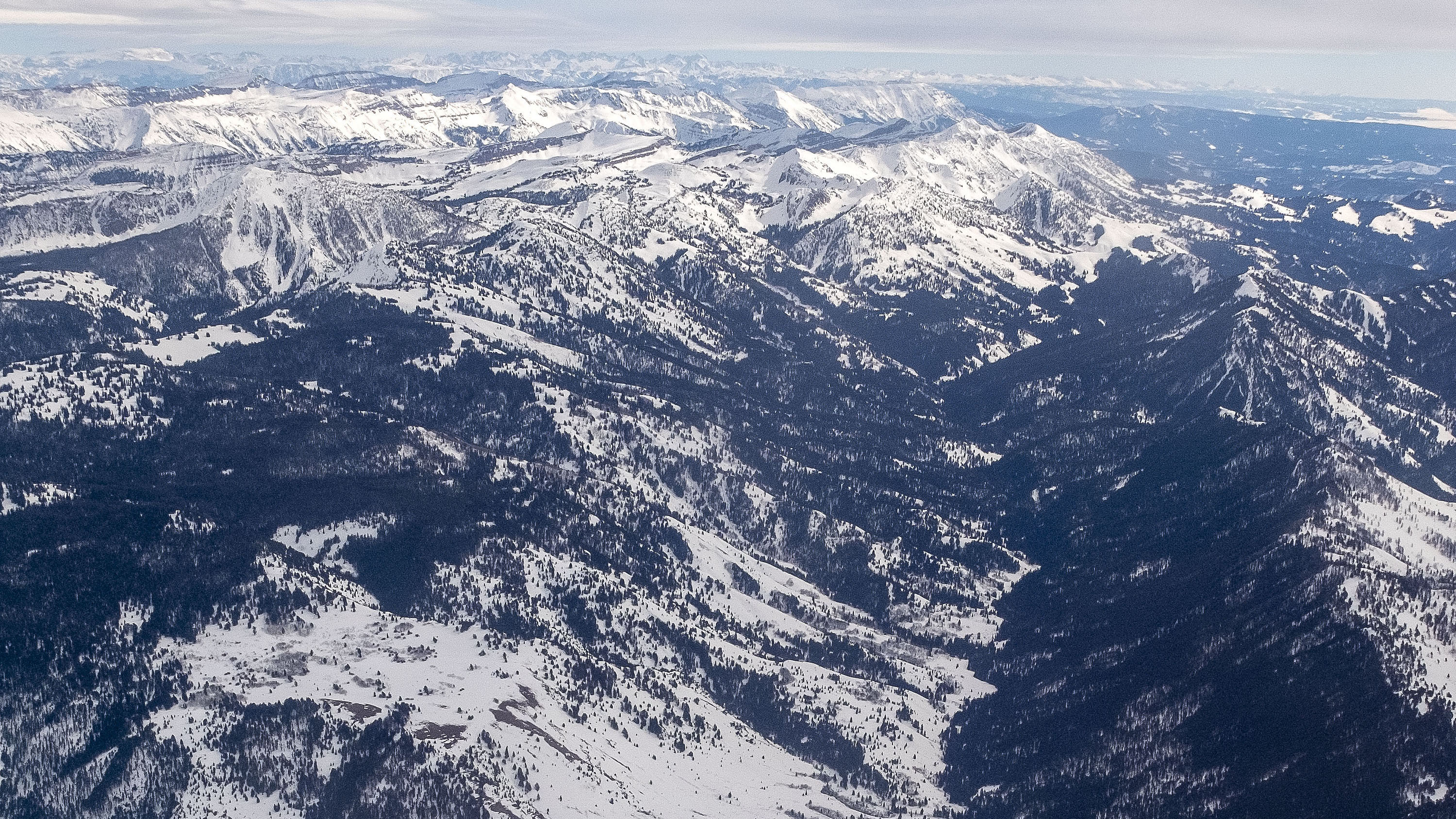Plowing paradise

How Grand Teton National Park clears one of the most spectacular roads in America
New grooming practices helped the park clear the park road in about 5 days.
JACKSON — Static crackled through the radio as Alex Roberts inched the 60-year-old rotary plow forward, its blades devouring the snow covering the road ahead and spitting chunky slush to the side.
Roberts paused the machine and listened. Then he pumped his fist.
“Fantastic,” he said. “We’re probably a quarter-mile from them.”
Only a few hundred feet south of the String Lake turnout in Grand Teton National Park, Roberts was thrilled. It was March 22, and after only a few days of work, park road crews had almost completely cleared the Teton Park Road from the Bradley-Taggart trailhead to Signal Mountain Lodge. All that separated equipment operators in the north and south ends was a few thousand square feet of snow piled 3 or 4 feet high. For the teams’ tractors and rotary plows, that would be quick work.
Roberts, who supervises Grand Teton National Park’s engineering equipment operators, took a breath. Still in neutral, he engaged the rotary plow’s reels — the blades that cut up the snow — throttled up to about 1,500 RPMs, and eased the throttle forward.
The Norland plow, a mechanical sexagenarian that has cleared the Teton Park Road since Lyndon B. Johnson was president, crawled forward, resuming its march. In the background, clouds swirled over the Teton range, obscuring the summit of Teewinot from view. Meanwhile, sun sprinkled over the valley floor, dappling the snow blowing from the plow.
“Who wouldn’t want to do this?” Roberts asked.
It’s a good question.
As a supervisor, Roberts does have to do paperwork and occasionally answer questions from nosy reporters. But his team’s job every spring is to clear the inner park road, prepping one of the most beautiful byways in America for the summer season.
To do so, they spent anywhere from a few days to a few weeks driving the Norland and a fleet of tractors with detachable rotary plows at a snail’s pace along the two-lane track, chopping up snow that has fallen over the course of Wyoming’s monthslong winter and been has been compressed by groomers, Nordic skiers and fluctuations of weather.
While there may be visually comparable roads in America, like the Going-to-the-Sun Road in Glacier National Park, there are few highways that share such perspective-altering vistas — and even fewer that give people a year-round place to exercise with a towering, 7,000-foot rise as a backdrop.
“I think it is one of the most beautiful, most iconic and importantly very accessible trails,” Nancy Leon, executive director of the Jackson Hole Nordic Alliance, said of the park road, which closes to all motorized traffic each year on Nov. 1. “It’s basically flat. It means that a beginner skier or even a snowshoer can get out on that trail and enjoy some of the most incredible views right in front of the Tetons.”
Each year, when Teton park’s plows start spinning, they signal not only the beginning of spring, but also the changing of the guard on the Teton Park Road. Groomed, cross-country ski trails are cut up and replaced with asphalt that is frequented by hikers, bikers, dog walkers and backcountry skiers eager to zip toward the park’s spires.
The change doesn’t mean Nordic athletes have to hang up their skis. In the past week, Leon has been crust-cruising along the side of the plowed road. Once the weather heats up this week, she plans to start bringing her bike, too.
“You can do a duathalon,” Leon said. “It really allows you to make the most of everything. It’s one of our favorite times of year.”
This year the transition from crusted, groomed trails to cleared, bike-able asphalt happened quickly: in five days. The road opened to visitors Friday.
A five-day process is faster than usual, and a far cry from the spring of 2023. Last year’s clearing took several weeks, in part due to a deeper, longer winter. But this winter, Teton park and the Grand Teton National Park Foundation, which funds the plowing program, also changed how they groom to make plowing easier in the spring.
Rather than grooming two lanes all the way from Bradley-Taggart to Signal Mountain, the PistenBullys merged into a single lane at the Highlands Historic District. That left a mile stretch with two lanes of groomed track and a single lane for the remaining 13 miles that was easier for rotary plows to chew through.
This year, the park also used a bulldozer to break apart the first mile of compacted snow.
Weather also helped. In mid-March, there had been a week of above-freezing temperatures, then a couple of days in the 50s, which helped soften up the snow and helped the machinery churn through it.
The plowing opens up a springtime recreational paradise. But the slow, methodical hum of the rotary plows is also critical to preparing the park for the summer season, when over 3 million visitors drive through the inner road, ogling wildlife, staying at lodges and swimming in the park’s glacial lakes.
Without the plows, the park’s May 1 opening would be delayed. Employee housing would be blocked, water tanks wouldn’t be filled or tested, and shops would be buried under feet of snow.
“The whole summer hinges on this,” Roberts said, as he nudged the Norland through a final snowbank. “We have to get this open.”
This story was published on April 3, 2024.






